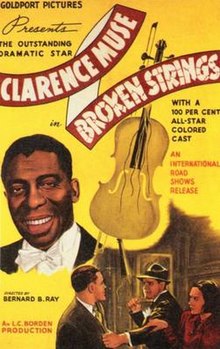
A fiddle is a bowed string musical instrument, most often a violin. It is a colloquial term for the violin, used by players in all genres, including classical music. Although in many cases violins and fiddles are essentially synonymous, the style of the music played may determine specific construction differences between fiddles and classical violins. For example, fiddles may optionally be set up with a bridge with a flatter arch to reduce the range of bow-arm motion needed for techniques such as the double shuffle, a form of bariolage involving rapid alternation between pairs of adjacent strings. To produce a "brighter" tone than the deep tones of gut or synthetic core strings, fiddlers often use steel strings. The fiddle is part of many traditional (folk) styles, which are typically aural traditions—taught "by ear" rather than via written music.
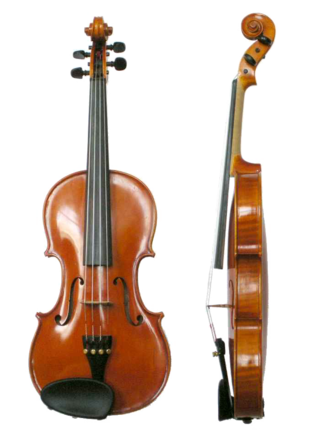
The violin, sometimes referred as a fiddle, is a wooden chordophone, and is the smallest, and thus highest-pitched instrument (soprano) in regular use in the violin family. Smaller violin-type instruments exist, including the violino piccolo and the pochette, but these are virtually unused. Most violins have a hollow wooden body, and commonly have four strings, usually tuned in perfect fifths with notes G3, D4, A4, E5, and are most commonly played by drawing a bow across the strings. The violin can also be played by plucking the strings with the fingers (pizzicato) and, in specialized cases, by striking the strings with the wooden side of the bow.

This is a list of notable events in music that took place in the year 1958.
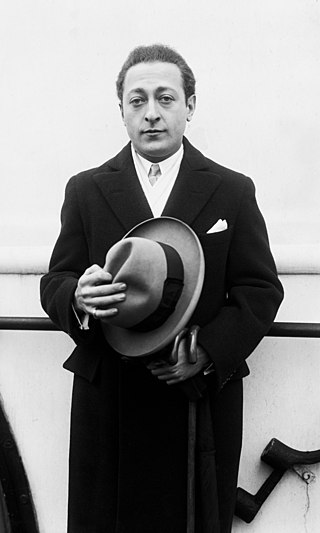
Jascha Heifetz was a Russian-American violinist, widely regarded as one of the greatest violinists of all time. Born in Vilnius, he was soon recognized as a child prodigy and was trained in the Russian classical violin style in St. Petersburg. Accompanying his parents to escape the violence of the Russian Revolution, he moved to the United States as a teenager, where his Carnegie Hall debut was rapturously received. Fritz Kreisler, another leading violinist of the twentieth century, said after hearing Heifetz's debut, "We might as well take our fiddles and break them across our knees."
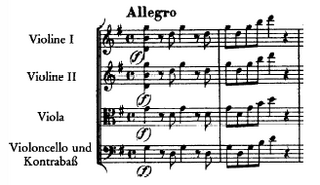
In music, a double stop is the technique of playing two notes simultaneously on a stringed instrument such as a violin, a viola, a cello, or a double bass. On instruments such as the Hardanger fiddle it is common and often employed. In performing a double stop, two separate strings are bowed or plucked simultaneously. Although the term itself suggests these strings are to be fingered (stopped), in practice one or both strings may be open.

The Violin Concerto in D minor, Op. 47 of Jean Sibelius, originally composed in 1904 and revised in 1905, is the only concerto by Sibelius. It is symphonic in scope and included an extended cadenza for the soloist that takes on the role of the development section in the first movement.

Ray Willis Nance was an American jazz trumpeter, violinist and singer. He is best remembered for his long association with Duke Ellington and his orchestra.
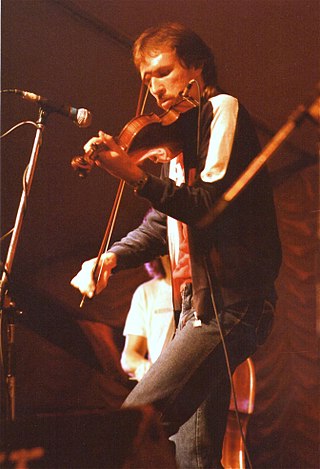
Mark O'Connor is an American fiddle player, composer, guitarist, and mandolinist whose music combines bluegrass, country, jazz and classical. A three-time Grammy Award winner, he has won six Country Music Association Musician Of The Year awards and was a member of three influential musical ensembles: the David Grisman Quintet, The Dregs, and Strength in Numbers.

Joseph Szigeti was a Hungarian violinist.

Kansas City is a 1996 American crime film directed by Robert Altman, and starring Jennifer Jason Leigh, Miranda Richardson, Harry Belafonte, Michael Murphy and Steve Buscemi. The musical score of Kansas City is integrated into the film, with modern-day musicians recreating the Kansas City jazz of 1930s.

Regina Carter is an American jazz violinist. She is the cousin of jazz saxophonist James Carter.
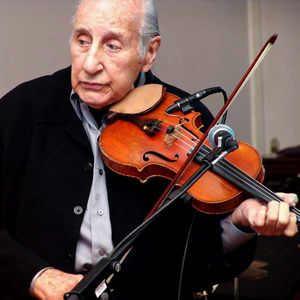
Johnny Frigo was an American jazz violinist, bassist and songwriter. He appeared in the 1940s as a violinist before working as a bassist. He returned to the violin in the 1980s and enjoyed a comeback, recording several albums as a leader.

Star Spangled Rhythm is a 1942 American all-star cast musical film made by Paramount Pictures during World War II as a morale booster. Many of the Hollywood studios produced such films during the war, with the intent of entertaining the troops overseas and civilians back home and to encourage fundraising – as well as to show the studios' patriotism. This film was also the first released by Paramount to be shown for 8 weeks.

Clarence Muse was an American actor, screenwriter, director, singer, and composer. He was the first African American to appear in a starring role in a major studio film, 1929's Hearts in Dixie. He acted for 50 years, and appeared in more than 150 films. He was inducted into the Black Filmmakers Hall of Fame in 1973.

Richard Dodd is an English cellist, recording artist and musician. He has appeared on numerous records beginning from The Three O'Clock's Album Sixteen Tambourines, and spanning different musical genres in Pop, with acts like Jonas Brothers, Vanessa Carlton, The Chicks Taking The Long Way album, Kelly Clarkson, Christina Aguilera and Taylor Swift and with rock bands including Foo Fighters, Queens of the Stone Age, and on Aerosmith's album Music From Another Dimension, alternative acts including Silversun Pickups, Sam Phillips, Ryan Adams, and Jenny Lewis and British acts including Robbie Williams, James Blunt, Snow Patrol, The Last Shadow Puppets, and Paul McCartney's Egypt Station. He has also worked with jazz greats Eugene Wright and Al Viola, on the Hadda Brooks album "Time Was When". He appears Beyoncé's Lemonade and on the track "I Corinthians 15:15" of Johnny Cash's posthumous album American VI: Ain't No Grave. He continues to contribute his cello sound to bands like Band of Horses, and artists Weyes Blood and Father John Misty.
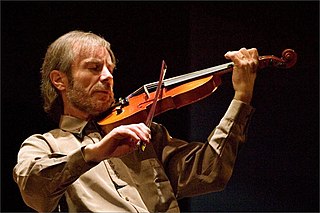
Jazz violin is the use of the violin or electric violin to improvise solo lines. Early jazz violinists included: Eddie South, who played violin with Jimmy Wade's Dixielanders in Chicago; Stuff Smith; and Claude "Fiddler" Williams. Joe Venuti was popular for his work with guitarist Eddie Lang during the 1920s. Improvising violinists include Stéphane Grappelli and Jean-Luc Ponty. In jazz fusion, violinists may use an electric violin plugged into an instrument amplifier with electronic effects.

American fiddle-playing began with the early European settlers, who found that the small viol family of instruments were more portable and rugged than other instruments of the period. According to Ron Yule, "John Utie, a 1620 immigrant, settled in the North and is credited as being the first known fiddler on American soil". Early influences were Irish, Scottish, and English fiddle styles, as well as the more upper-class traditions of classical violin playing. Popular tunes included "Soldier's Joy", for which Robert Burns wrote lyrics, and other tunes such as "Flowers of Edinburgh" and "Tamlin," which have both been claimed by both Scottish and Irish lineages.
Samuel "Savoirfaire" Williams is a classically-trained, American jazz violinist from Chicago.
Billy Contreras is an American jazz violinist and bluegrass fiddler, multi-instrumentalist, session player and educator.
